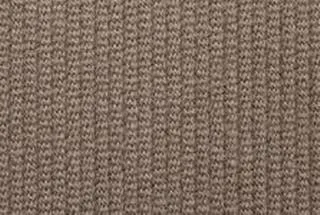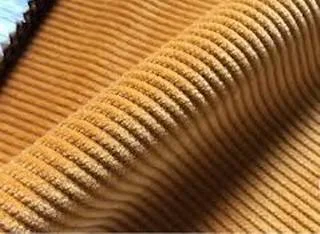Different types of heavyweight fabric
There are different types of heavyweight fabric, such as below-
Denim fabric
Denim fabric is a strong cotton warp-face textile where the weft runs under two or more warp
yarns. This twill weave creates a diagonal ribbon that separates it from the
cotton duck. Although a denim predecessor named Dungaree was produced in India
for hundreds of years, denim itself was first produced in the French city of
Nemes named Serge de Nimes. It is available in a variety of colors, but the
most common denim is blue denim where the warp thread is dyed and the weft
thread is white. As a result of the twill weaving of the warped face, the
textile is dominated by blue warp thread on one side and white weft thread on
the other. Jeans made from this fabric are thus mainly white on the inside.
Bedford cord
Named
after the city of New Bedford, Bedford Cord, Massachusetts' famous 19th-century
textile manufacturing town. It is a durable fabric that resembles corduroy. The
loom has ornaments along the length of the side, but without the filling yarn,
the corduroy is made to characterize the distinctive wells. This may include
the presence of thin lines between the narrow-width stripes. Due to its rigid
construction, it is often used in upholstery or outerwear that does not require
dropping. Trousers made with a Bedford cord are sometimes known as Bedford cord.
A water-repellent cotton version of the Bedford cord called the jungle cloth was used by the United States Navy for flight wear in the 1920s and 1940s.
Today Jungle Cloth is made exclusively in Japan by special order of clothing
water. It weighs about 14oz and it is not treated with water.
Broadcloth fabric
Broadcloth fabric is a dense, simple woven fabric, usually made from wool. The defining feature
of Broadcloth is not its finished width, it was further expanded and later
heavily blended to shrink to the required width. The mills achieve much closer
yarns than the ones achieved in the factory and allow the individual fibers of
wool to be tied together in a shaking process, resulting in a thick, blind-faced
fabric with a stiff groove that is extremely weather-resistant, able to take
cut edges without the need for hardware and hemmed. It was made in several
places in England at the end of the Middle Ages. The raw element was cut into
short-head wool, carded, and yarn, and then woven into broadloom to create a
1.75-yard wide fabric. It is then full, usually matching a filling. When full
the fibers of the cloth were felt together, resulting in a smooth surface.
Cordura fabric
Cordura
is a fabric technology used in a wide array, including luggage, backpacks,
trousers, military clothing, and performance clothing. Cordura fabrics are
durable and resistant to abrasion, tears, and scuffs. Originally E.I. Developed
and registered as a trademark by Du Pont de Names & Company in 1929, it is
now a wholly-owned subsidiary investor property of Coach Industries. Cordura
fabric is usually made of nylon but it can be blended with cotton or other
natural fibers. It is available in a variety of constructions, weights, and
aesthetics, especially versions designed for tear resistance and color
retention. Also, the base layer, denim, and canvas fabrics have a blend of
Invista 420 nylon 6, 6 fiber, and cotton which is known as Cordura Baselier,
Cordura Denim, and Cordura Duck respectively. Some corduroy fabrics are
specifically designed for military and extended outdoor use. Cordura fabrics
have a long military heritage history and the many U.S. The military fabric
space Cordura is based on the brand specification.
Corduroy fabric
Corduroy
fabric is a textile fabric with a distinct pattern, a cord, or wale. Modern
corduroy usually consists of a bunch of cords, sometimes showing a channel
between tufts. The fabric looks like it is made from multiple ropes stretched
parallel to each other and then sewn together. It is considered a durable
fabric. It is available for making trousers, jackets, and shirts. The width of
the cord usually depends on the size of the wale. Wide wale is used in the
upholstery of trousers and furniture; Medium, thin and delicate wall fabrics
are commonly found in garments worn above the waist. Corduroy is made by
weaving extra fiber from the base fabric to create a vertical ridge called a
wale. Wales are made so that clean lines can be seen when the piles are cut.
Double fabric
Double
fabric or double weave is a type of woven textile where two or more sets of
warp and one or more sets of weft or filling yarn are joined together to form
two layers of fabric. The movement of threads between layers allows for the
creation of complex patterns and surface structures. In the case of
contemporary textile production, the term double cloth or true double cloth is
sometimes limited to two warp and three weft fabrics, lightly connected by a
third or bound weft as two separate fabrics, but this distinction is not always
made. And double weave fabrics where two warp and two weft interlace are also
called double fabrics to create geometric patterns. Double-faced fabrics are a
form of double cloth made of one cup and two sets of wefts, or two warps and a
weft. These fabrics have two right sides or faces and no backsides and are mostly
used for blankets, satin ribbons, and interlinings. Modern applications of
double fabrics include haute couture coats, blankets, furniture fabrics, and
some brocades.
Gabardine fabric
Gabardine fabric is a sturdy, tightly woven fabric used to make suits, overcoats, trousers,
uniforms, windbreakers, and other clothing. The term gabardine is used to refer
to a specific item of clothing, a kind of long cassock, but often open to the
front, at least after the 15th century, in the 16th century, used for the outer
garments of the poor and later to refer to a raincoat or protective
smoke-frock. The original fabric was spoiled by wool, sometimes mixed with
cotton, and waterproofed using lanolin before weaving. Fiber can be pure
cotton, textured polyester, or even a blend. The gabardine is woven as a
warm-faced steep or regular towel, with a prominent oblique rib on the face and
a smooth surface at the back. Gabardine always has a lot more warp than weft
yarn. It is tightly woven and water-resistant but more comfortable than
rubberized fabrics.
Linsey-woolsey
Linsey-woolsey
is a thick towel or plain-weave fabric that is woven with linen straps and woolen
cloth. Similar fabrics of cotton and woolen fabrics of colonial America were
also called linsey-woolsey. The name is derived from a combination of linen and
wool. This textile has been known since ancient times, named Shatnez in Hebrew,
the Torah and therefore Jewish law forbids wearing it. From the 17th century
onwards a coarse fabric called woven stuff, originally a woolen fabric may have
been made of Linsey-woolsey in Kidderminster. Linsey-woolsey was an important
fabric in Colonial America due to the relative scarcity of wool in the
colonies. Many sources say it was used for the whole cloth bird, and when parts
of the quilt came out, the remains were cut off and cut into pieces in the
patchwork quail. Some sources argue about it and say that the material was too
rough and was used instead for clothing and sometimes light blankets. It was
also used as a ground fabric for needle points. It was valued for its warmth,
durability, and sophistication, but not for its appearance.

















0 Comments